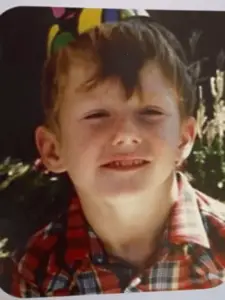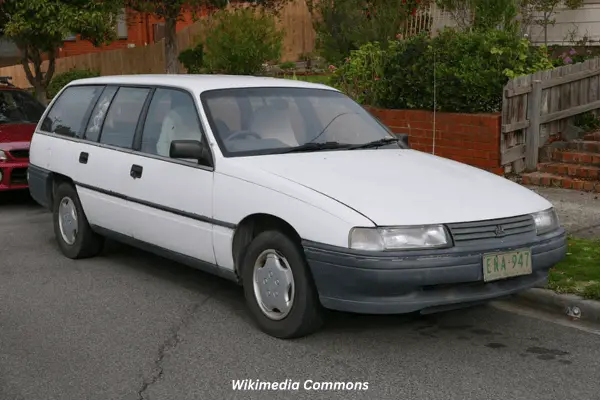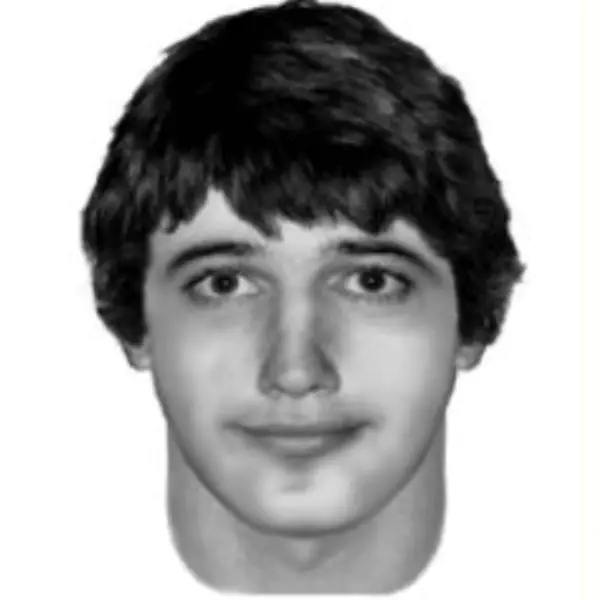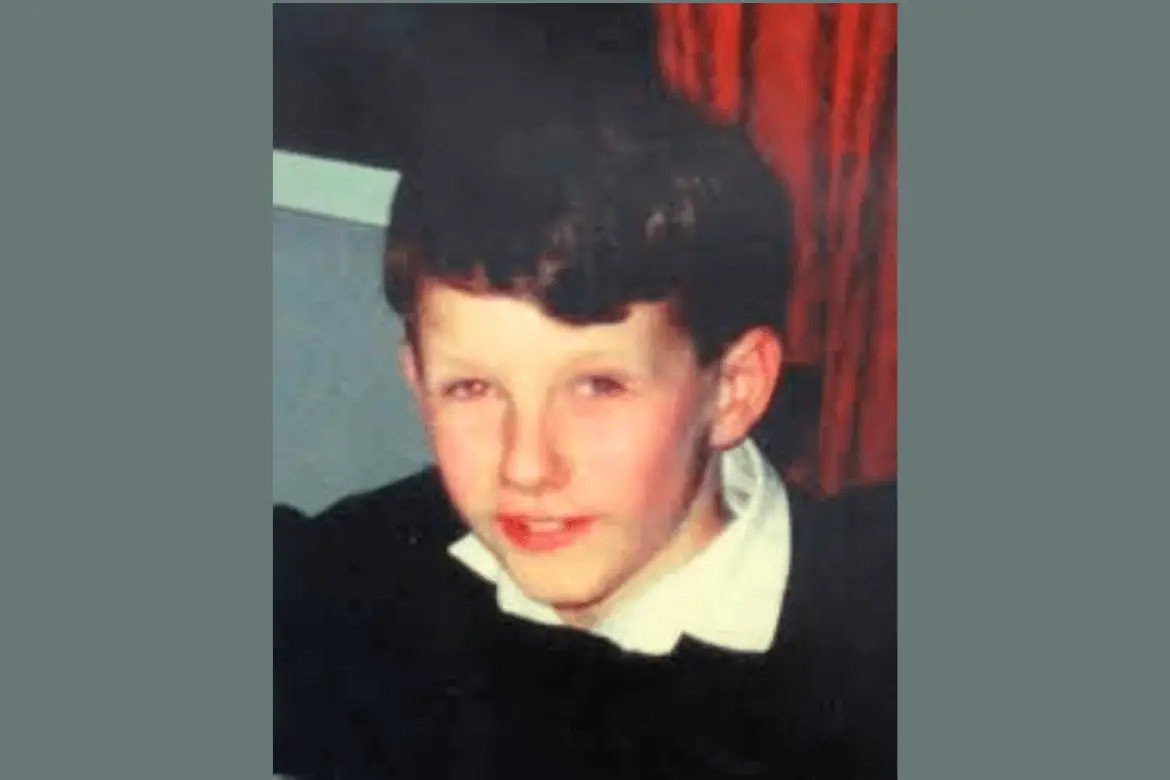Craig Taylor Ewen, 9, disappeared from Coningham, Tasmania, Australia, after leaving his family’s vacation home on September 2, 1993. He has not been seen since. Craig had a history of leaving home without permission before his disappearance, but local police always found him and took him home. A stolen kayak led a coroner to conclude in 2014 that Craig likely drowned, though he did not rule out foul play.
Who was Craig Taylor Ewen?

Craig Taylor Ewen was born in Edinburgh, South Australia, on April 1, 1984, to Veronica Dunbar, a struggling alcoholic who drank during her pregnancy, resulting in Craig having a permanent low attention span. After his birth, Veronica continued drinking, and Craig was placed in temporary care and ultimately permanent care when he was six months old. His uncle, Roger Taylor, and Roger’s wife, Sandra Taylor, adopted Craig, and he moved to Launceston in August 1986 to live with them and their two daughters, Susan and Margaret.
Because of his mother’s neglect due to alcohol abuse, Craig suffered low muscle tone, which affected his speech and motor skills. While he required physiotherapy, by age 4, Craig had reached satisfactory development. His coordination skills and overall strength remained affected, however, and he had a permanent tremor in his left hand.
The Taylor family still resided in Launceston in 1993, and Craig attended third grade at East Launceston Primary School. The family often spent school holidays at a cabin at 159 Coningham Road, Coningham, that belonged to Sandra’s parents. It is about 140 miles south of Launceston. The family had gone there numerous times, and Craig became familiar with the area, specifically Coningham Beach, Coningham Road, and the area surrounding the vacation home.
The family returned to Coningham in early September 1993, but this time, what should have been a lovely vacation turned into every parent’s nightmare.
Disappearance of Craig Taylor Ewen
Sandra and the children arrived at the cabin around 4 p.m. on Thursday, September 2, 1993. They planned to stay until Thursday, September 9. Roger was coming later, presumably. Craig, 9, appeared cheerful, assisted Sandra with unloading the car, and played in his room.
On September 3, Craig chatted with Sandra around 9:30 a.m. as he made her toast and ate his breakfast. Sandra asked him to get dressed because she planned to take him to Kingston, about 10 miles north, to shop.
As Sandra prepared to leave, she hollered to Craig that she was ready to go. However, he never answered her. She looked in the cabin for him but could not find him. Regardless, she decided to travel to Kingston alone, leaving at 11:30 a.m. Susan and Margaret were home should Craig return.
Before she headed to her car, Sandra checked outside around the house. She also drove to a nearby vacant lot, Coningham Beach, and the Margate area. However, she never saw Craig and continued to Kingston.
Sandra returned to Coningham around 1 p.m., but Craig was still absent. By 4 p.m., Craig had not returned home, and Sandra drove to the Kingston Police Station to inform the police. On her way home, Sandra looked for Craig as she went through Snug and Coningham Beach but never saw any sign of him.
Sandra told the Kingston police that Craig had left home without permission twice before they traveled to Coningham.
The first incident occurred on Sunday, August 15, 1993. Roger and Sandra returned home at 3:30 p.m. and discovered Craig missing. They had left him in the care of Susan, 14, and Margaret, 12. Roger and Sandra drove around the area for three hours looking for Craig before notifying the police at 6:30 p.m. Police located Craig at 8:15 p.m. on a street five minutes from the Taylor home. He appeared to be heading toward home. Craig gave three different explanations as to why he had left. He was upset but promised not to leave without permission or explanation again.
However, on Monday, August 23, 1993, Craig did leave again. Sandra departed at 5:40 p.m. to take Margaret to the doctor, leaving Craig home alone or with Susan (this is unclear). Roger arrived about five to ten minutes later and noticed Craig’s absence.
After Sandra and Margaret returned home, Roger and Sandra searched for Craig until 10 p.m., when they notified the police. However, the police told them they had found Craig knocking on the door of a residence approximately two to three miles from home.
On September 6, 1993, Craig’s counselor, Donna Ritchie, told the police about her counseling session with Craig following his second occurrence leaving home. He told her that he ran away because he was bored.
“When I’m alone, I just jump the fence and go for a walk,” Craig said. (Magistrates Court, 2014)
Multiple Searches
Once Sandra reported Craig missing to the Kingston police, officers conducted a preliminary search and mobile patrols throughout the night. They presumed Craig was lost or injured in the area and would find him quickly like the previous times, but they did not.
At daybreak on Saturday, September 4, 1993, authorities performed a full-scale ground and water search focused on the coastline and the Coningham State Reserve. However, the hunt was made difficult by many out-of-town children vacationing in the area due to a school holiday. Authorities suspended the search at nightfall.
The search resumed on Sunday, September 5, with an additional 60 searchers and the police diving team, who searched water holes near the Taylor cabin and off-shore at Coningham Beach. By nightfall, the search teams still had not located Craig, and authorities called off the search. They relocated the police command center to Kingston Police Station.
The next day, September 6, police conducted a line search of the residential area of Coningham. The Water Police scoured the waters from Snug to Oyster Cove.
Further searches took place through November of 1993. However, all searches were unsuccessful in locating Craig or clues to his whereabouts.
Kayak Stolen
On Saturday, September 4, 1993, Stewart and Leonie Ims, 46 (later renumbered 79) Old Station Road, Lower Snug, reported their 14-foot fiberglass kayak stolen from their front yard sometime after 3:30 p.m. the day Craig vanished. Their home is a 15-minute walk from the Taylor cabin.
Christopher James Campbell and Rodney Pless found the kayak at approximately 11:45 a.m. on September 4 as they walked along the beach south of the Howden fire station, about eight miles from the Ims home and across North West Bay. The kayak was upside down with the front quarter section in the water. They pulled it ashore and noticed significant scratches on its bottom. The men knew Craig was missing and called the police. Leonie Ims confirmed to investigators that the bottom of the kayak had more scratches since its return.
Police thought it was conceivable that Craig stole the kayak and drowned. But Craig could not swim and had no experience using a kayak. Furthermore, there were no sightings of a boy in a kayak on the bay.
Sightings of Craig Taylor Ewen
Craig’s disappearance made headlines across the country, resulting in dozens of reported sightings of the missing boy. Of those reported, police considered only a handful likely to be Craig seen at various times throughout the day he vanished. However, two sightings received the most attention from the police.
Between 4 p.m. and 4:30 p.m. on Friday, September 3, 1993, Dianne Donaghy of 50 Old Station Road, Lower Snug, saw a boy standing behind or beside the arrow sign near the pier on Old Station Road. He was looking around to see if anyone was looking for him. She thought he was playing hide and seek, but she could not see other children. Dianne watched the boy for a couple of minutes. When she saw a photo of Craig, she believed that boy could have been him.
Around 5 p.m. that same day, Sheralee May Direen of Deep Bay drove south on Channel Highway towards Lower Snug. As she approached Old Station Road, she noticed a young boy standing along the side of the road. He appeared to be hitchhiking towards Hobart. The boy had short brown hair and dark clothing, consistent with what Craig typically wore. (It is unknown precisely what Craig wore the day he vanished)
Driving past the boy, she noticed a white 1991 Holden Commodore station wagon approaching her. The vehicle had yellow number plates and roof racks identical to the one owned by her friend. She started waving to her friend but realized the driver was not him. When she passed the vehicle, she looked in her rearview mirror and saw the car pull up next to the boy. Unfortunately, she did not see if the boy entered the wagon.

Sheralee underwent hypnotherapy, giving a detailed account of what she saw. However, she could not provide a better description of the boy other than he was about her son’s age, 10, had a slight build, and was standing in the shade of some trees.
The media re-enacted her observations and released a composite sketch of the driver. Dozens of calls came in, but all police inquiries into the drivers led nowhere. Additionally, no one came forward saying they were driving a similar vehicle in the area that afternoon. Police subsequently searched the location of this sighting but found nothing.
Age-Enhancement Technology
In 2008, Tasmania Police began using age-enhancement technology to create images of missing people and their current appearance.
Craig was one of them.
“People who are very well-meaning still ring up reporting sightings of Craig looking as though he would as a nine-year-old boy,” Constable Jessica Reidy said.” (Australia Broadcasting Corporation, 2008,)
Reidy pointed out that Craig would have been 25 then. She said the technology “would be particularly helpful in helping people to know what to look for.”

2014 Coroner Ruling on Craig Taylor Ewen
Coroner Stephen Raymond Carey gave his ruling in Craig’s case in Hobart on August 4, 2014.
I am satisfied that detailed searches were conducted and that the most probable explanation for his disappearance is that he took the kayak from the Ims’ property, dragging it across the roadway, and entered the water in the kayak. He had no experience in the use of a kayak and had little or no ability to swim. I am satisfied that it is probable that this kayak overturned throwing Craig into the water and that he subsequently perished by drowning or hyperthermia.
Given the identification of an incident given by Ms. Direen has not been satisfactorily excluded the possibility that Craig entered that motor vehicle and subsequently came to harm cannot be excluded, and this alternate possibility remains open.
I am satisfied however given the lack of any information as to Craig’s location subsequent to his disappearance and the unlikelihood that he was able to run away and establish himself somewhere else that he in fact died on or about the day of his disappearance. His cause of death cannot be positively determined.
Sources
“Craig Taylor Ewen.” Australian Missing Persons Register. https://australianmissingpersonsregister.com/ampr/CraigTaylor.htm
“Craig Taylor Ewen: Record of Investigation Into Death (Without Inquest). Magistrates Court, August 4, 2014. https://www.magistratescourt.tas.gov.au/coronerscourt/findings/coronialfindings/t/taylor,_craig_ewen_-2014_tascd_262
“New Technique to Aid in Missing Persons Cases.” Australian Broadcasting Corporation, August 10, 2008. Australian Missing Persons Register.



